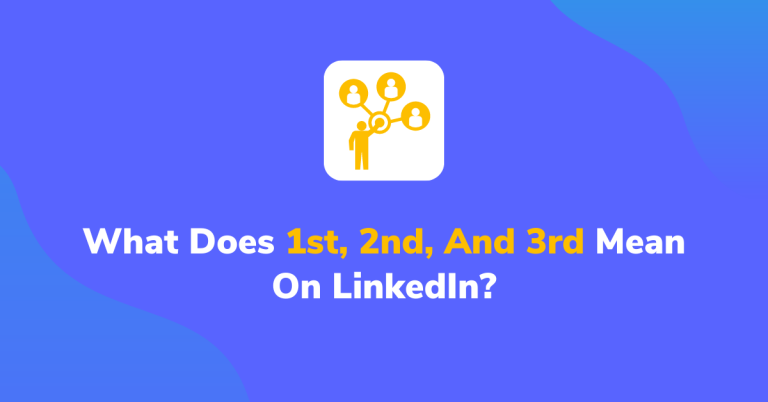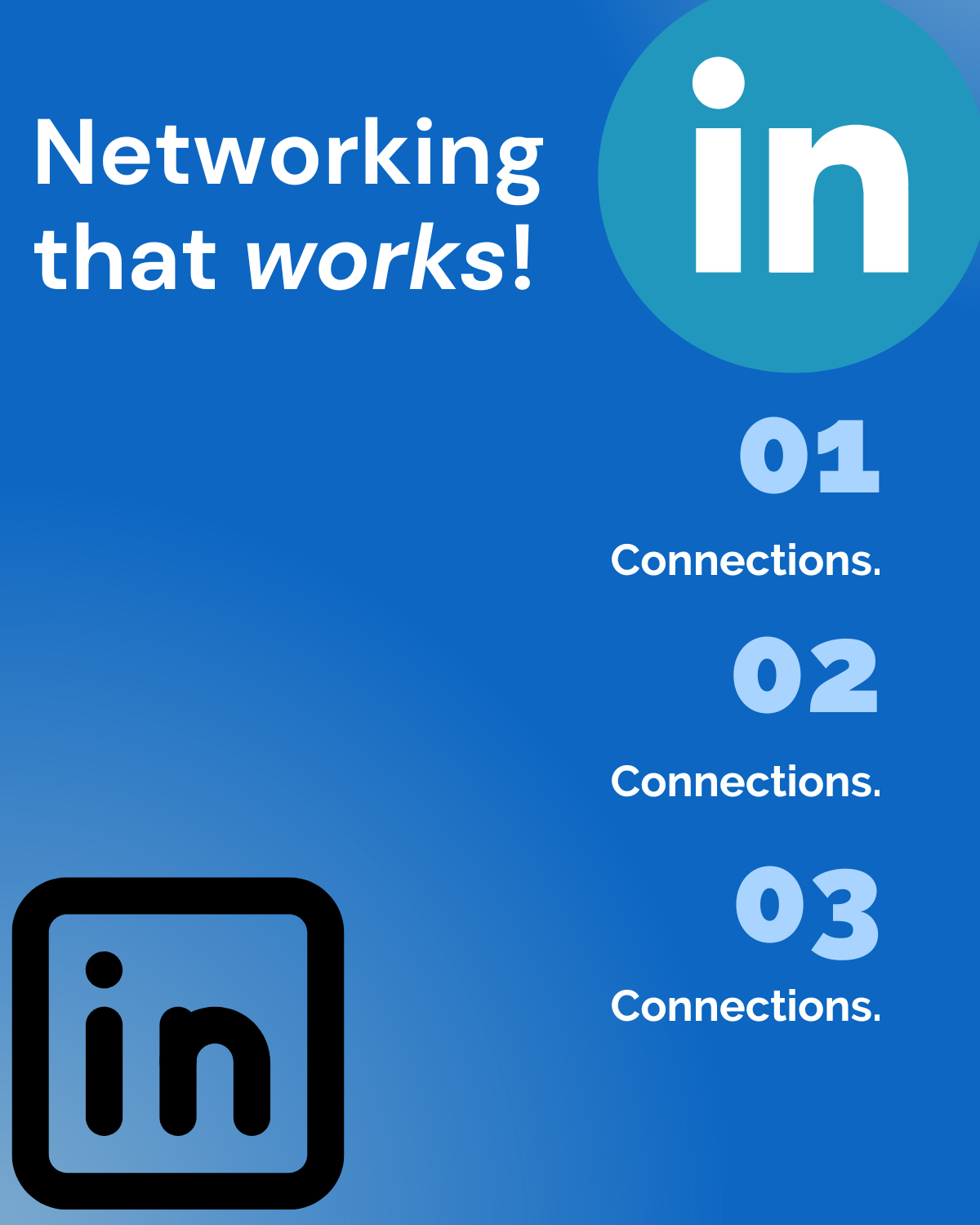LinkedIn is a powerful platform for professionals looking to network, share insights, and find opportunities. Understanding the different types of connections—1st, 2nd, and 3rd—is crucial for maximizing your networking potential. Each type of connection offers unique advantages, and knowing how to navigate these relationships can open doors to new collaborations and career advancements. Let’s dive into what these connections mean and how you can leverage them effectively.
What 1st Connections Mean on LinkedIn

When you think of your 1st connections on LinkedIn, think of them as your immediate network—these are the people you have directly connected with. When you send a connection request and it’s accepted, that person becomes your 1st connection. Here are some key points to understand:
- Direct Access: You can send messages to your 1st connections without needing an introduction. This direct line of communication is incredibly valuable for networking.
- Content Sharing: When your 1st connections post updates or share articles, you’ll see these in your feed. This is a great way to stay informed about their professional activities and interests.
- Recommendations and Endorsements: If you work closely with someone, asking them for a recommendation or skills endorsement is more straightforward, as you have an established relationship.
Building a robust network of 1st connections can significantly enhance your professional visibility. Here are some strategies to increase your 1st connections:
- Personalize Connection Requests: When sending requests, include a brief message explaining why you want to connect. This personal touch can increase your acceptance rate.
- Engage with Their Content: Before reaching out, engage with their posts by liking or commenting. This will make your name familiar to them when you send the request.
- Attend Networking Events: Whether virtual or in-person, events are great places to meet potential 1st connections. Follow up with a connection request afterward!
Remember, quality beats quantity. While it might be tempting to connect with as many people as possible, focus on cultivating meaningful relationships with those in your industry or areas of interest. This will lead to more fruitful interactions and opportunities down the line.
In summary, 1st connections are the foundation of your LinkedIn network. By nurturing these relationships and engaging with your connections, you can create a dynamic network that supports your professional goals and opens up new avenues for collaboration.
Also Read This: Citing LinkedIn Sources in APA Format: A Complete Guide
The Importance of 2nd Connections in Networking

When it comes to networking on LinkedIn, 2nd connections are like the bridge between you and a wider network. These are individuals who are directly connected to your 1st connections but not to you. Why does this matter? Because they can open doors to opportunities and insights that might otherwise be out of reach!
Imagine you’re looking for a job in a specific industry, say marketing. Your friend, Alex, is connected to Jamie, a marketing manager at a company you admire. Jamie is a 2nd connection for you. If you reach out to Alex and ask for an introduction, you're not just asking for a favor; you're leveraging that connection to access a new opportunity.
Here’s why nurturing your 2nd connections is essential:
- Broaden Your Reach: 2nd connections can introduce you to their network, which can significantly expand your professional circle.
- Insights and Recommendations: They can provide valuable insights about industries, companies, and job openings that you might not find on your own.
- Trust Factor: When a mutual connection introduces you, it adds a level of trust and credibility that cold outreach lacks.
So, how do you effectively engage with your 2nd connections? Here are some tips:
- Personalize Your Messages: When reaching out, mention how you’re connected and what you admire about their work.
- Offer Value: Share insights, resources, or even just a thoughtful comment on a post to build rapport.
- Ask for Introductions: If there's someone specific you want to connect with, don’t hesitate to ask your 1st connection to introduce you.
Embracing your 2nd connections is like stepping into a vast ocean of opportunities. The more you engage, the richer your networking experience becomes!
Also Read This: How to Add a Link to a LinkedIn Post: A Simple Guide
Understanding 3rd Connections and Their Relevance
Now, let’s dive into the world of 3rd connections. These are individuals who are connected to your 2nd connections but have no direct link to you. At first glance, they might seem less relevant, but don't underestimate their potential. 3rd connections can still play a pivotal role in your networking strategy!
Think of 3rd connections as acquaintances in a large gathering. While you may not know them personally, they can still provide valuable information or introductions. Here’s why they matter:
- Hidden Opportunities: Sometimes, the best job openings or collaborations come from people you’ve never met directly.
- Shared Interests: 3rd connections often share interests or backgrounds with your 2nd connections, making them more relatable and approachable.
- Expanding Your Knowledge: They can provide insights into fields or areas you’re interested in, broadening your understanding.
Engaging with 3rd connections requires a slightly different approach:
- Research Before Reaching Out: Take some time to understand their background and find common ground before sending a request.
- Be Specific: When you reach out, mention your mutual connection and why you’re interested in connecting with them.
- Join Groups: Participating in mutual interest groups can create opportunities to interact with 3rd connections organically.
In essence, while 3rd connections may seem distant, they can be invaluable to your networking strategy. They represent a world of potential connections waiting to be explored!
Also Read This: How Important Is LinkedIn for Professional Growth and Opportunities
5. How to Leverage Your Connections for Networking Success
So, you’ve built a solid network on LinkedIn—great job! But how do you turn those connections into actual networking success? Here are some strategies to help you make the most out of your LinkedIn connections:
- Engage Regularly: Don’t just connect and forget. Engage with your connections by liking, commenting on, or sharing their posts. A simple “Great insight!” or “I love this perspective!” can go a long way in fostering relationships.
- Message Thoughtfully: When reaching out to your connections, personalize your messages. Mention something you have in common, like a shared interest or mutual connection, to break the ice. For example, “Hi Jane, I noticed we both attended the same conference last year. I’d love to hear your thoughts on the key takeaways!”
- Request Informational Interviews: If you’re looking to learn more about a specific industry or role, don’t hesitate to ask for a quick chat. Most people are happy to share their experiences. Just be respectful of their time!
- Offer Value: Networking is a two-way street. Think about what you can offer your connections—maybe it’s an interesting article, an introduction to someone in your network, or simply your expertise on a topic.
- Join Groups: Participate in LinkedIn groups related to your industry. Engaging in discussions within these groups can help you connect with others and establish yourself as a knowledgeable resource.
By leveraging your connections effectively, you create a supportive network that can open doors to opportunities you may not have considered before. Remember, networking isn’t just about who you know; it’s about how you interact with them. Take the time to nurture those relationships, and you’ll see the fruits of your efforts!
6. Best Practices for Growing Your LinkedIn Network
Growing your LinkedIn network is just as important as what you do with it. Here are some best practices to help you expand your connections in a meaningful way:
- Be Selective with Connection Requests: Sending connection requests to everyone may seem appealing, but it’s more effective to connect with people whose interests align with yours. Aim for quality over quantity. For instance, if you’re in marketing, seek out professionals in the same field or related industries.
- Personalize Connection Requests: Always include a note when sending a connection request. A brief introduction about yourself or why you want to connect makes a significant difference. For example, “Hi Alex, I came across your profile while researching trends in digital marketing. I’d love to connect and exchange insights!”
- Participate in Networking Events: Attend LinkedIn webinars, virtual meetups, or industry conferences. Engaging with professionals in real-time can lead to valuable connections. Plus, you can follow up with new contacts afterward to continue the conversation.
- Regularly Update Your Profile: An up-to-date profile attracts more connections. Make sure your headline reflects your current role and aspirations, and showcase your skills and achievements. Think of your profile as a dynamic representation of your professional journey.
- Share Quality Content: Posting insightful articles, updates about your projects, or industry news can draw attention and engage your network. When others find value in your content, they’re more likely to connect and engage with you.
By following these best practices, you’ll not only grow your LinkedIn network but also build a community of professionals who can support and inspire you throughout your career. Happy networking!
 admin
admin








